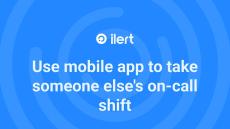|
By Daria Yankevich
We’re thrilled to announce that we’ve integrated with Netdata, a popular open-source monitoring solution, to give you more visibility and control over your systems. This powerful combination enhances your ability to monitor, detect, and respond to system alerts in real time.
|
By Daria Yankevich
In this quarterly product update, you’ll discover how to customize ilert dashboards to fit your team’s needs, find advanced filters for building complex alert actions, and reduce costs as an MSP using ilert status pages.
|
By Daria Yankevich
The Industrial Internet of Things (IIoT) industry is experiencing rapid growth and transformation, driven by advancements in connectivity, data analytics, and automation technologies. The number of connected devices and sensors is constantly growing and is expected to be around 18.8 billion by the end of 2024. More and more manufacturers rely on automation every day.
|
By Daria Yankevich
ilert offers over 100 out-of-the-box integrations commonly used in IT operations. From monitoring and observability platforms to ITSM solutions, chat and collaboration apps, fleet management, and IoT tools—these and many others are used daily by engineers worldwide to achieve operational excellence. However, there are also tools outside the developer's usual scope that can prove helpful during incidents.
|
By Zsuzsanna Borovszki
Postmortem reports are essential in incident management, helping teams learn from past mistakes and prevent future issues. Traditionally, creating these reports was a slow, tedious process, requiring teams to gather data from multiple sources and piece together what happened. But with AI and Large Language Models (LLMs), this process can become faster, smarter, and much less of a headache.
|
By Zsuzsanna Borovszki
In an ideal world, every alert would signal a unique and critical issue. However, in reality, alerts often come in waves. Alert noise refers to the overwhelming volume of notifications that incident response teams receive, many of which may be redundant or irrelevant. This can lead to alert fatigue, where critical issues might be overlooked due to the sheer number of notifications.
|
By Daria Yankevich
Welcome to our detailed guide, which will help you incorporate your current ilert configurations for incident management into Terraform. Here, you will find a step-by-step tutorial to import your existing ilert resources to the Infrastructure as Code project and recommendations from our engineering team on best practices to maintain consistency across your infrastructure and incident management processes.
|
By Daria Yankevich
We are excited to add one more integration from the Industrial Internet of Things realm to our catalog! The seamless integration between ilert and Ubidots aims to streamline your operations, reduce machines' downtime, and improve overall efficiency.
|
By Daria Yankevich
You might have noticed that we released a series of AI-supported features last year. Intelligent alert grouping, developed to reduce alert fatigue, is the icing on the cake. With it, we combined all ilert AI features in a new powerful add-on that aims to reduce stress and give more clarity during IT incidents.
|
By Daria Yankevich
You might be surprised. Why does ilert, the platform dedicated to alerting and incident management, publish anything about the direct (in the sense of bypassing an incident management tool) connection between monitoring solutions and Twilio? Do they take the bread out their own month? —You might think. Working on DevOps incident management since 2009, we believe every solution fits specific needs.
|
By iLert
Welcome to our tutorial on changing the layout of your ilert status pages. In this video, we'll walk you through the layout options available and how to customize your status page to fit your needs best. Customizing your status page helps you communicate incidents and updates more effectively to your users. A well-organized status page enhances transparency and trust by clearly displaying service statuses and ongoing issues.
|
By iLert
We're excited to announce a major update to the Call Routing add-on! Our new call flow builder makes it easy to create custom call flows. The intuitive drag-and-drop interface simplifies the configuration process, allowing you to create command sequences and multiple scenarios for different users by adding new branches to your flow. Watch this video to learn how to set up your first sequence of commands.
|
By iLert
In this video, you'll learn how to update your status page directly from an alert. This method provides a quick way to notify your customers about any issues.
|
By iLert
There are several ways to update ilert status pages. In this video, you'll learn how to do it using alert actions. We'll create a new alert action so that your status page automatically updates with a new status whenever an alert is received. Haven't tried ilert status pages yet? Get a public status page integrated with ilert alerting system for free.
|
By iLert
In this video, we explore some helpful and perhaps less obvious features of ilert app. Watch to learn how to choose custom sounds for critical alerts, mute notifications for a specific period, and quickly set a maintenance mode for alert sources while on the go.
|
By iLert
It's late at night, and your entire family is asleep. Suddenly, your monitoring tool sends out a critical alert. With ilert, you can get these alerts directly on your Apple Watch in a vibration-only mode. Check this video to learn how to enable notifications for your device.
|
By iLert
ilert's maintenance windows feature allows users to schedule downtime for alert sources and services. This ensures that on-call responders won't receive alerts from alert sources during maintenance and service, and status page subscribers will be informed about planned and ongoing service maintenance. In this video, you will learn how to use this feature on ilert mobile app.
|
By iLert
You can use ilert mobile app to receive notifications even when your phone is muted. In this video, you will learn how to switch on this feature.
|
By iLert
Use the ilert mobile app to receive push notifications about alerts and gain access to essential incident management features so that you can take immediate action from anywhere. The app also allows you to quickly take over your colleague's on-call shift while on the go. Check out the video to learn more about this feature.
|
By iLert
Use ilert support hours for alert sources to manage notifications' priority.
- October 2024 (4)
- September 2024 (2)
- August 2024 (5)
- July 2024 (1)
- June 2024 (5)
- May 2024 (4)
- April 2024 (4)
- March 2024 (4)
- February 2024 (6)
- January 2024 (5)
- December 2023 (4)
- November 2023 (6)
- October 2023 (5)
- August 2023 (1)
- June 2023 (2)
- April 2023 (2)
- February 2023 (1)
- January 2023 (2)
- December 2022 (3)
- November 2022 (2)
- October 2022 (3)
- September 2022 (5)
- June 2022 (1)
- May 2022 (1)
- February 2022 (1)
- September 2021 (1)
- August 2021 (2)
- June 2021 (1)
- March 2021 (1)
- December 2020 (1)
- November 2020 (1)
- October 2020 (1)
- September 2020 (2)
- July 2020 (1)
- May 2020 (2)
- April 2020 (3)
- March 2020 (1)
- January 2020 (1)
- December 2019 (1)
iLert is an incident and on-call management platform for DevOps teams. iLert helps you to respond to incidents faster by adding on-call schedules, SMS, and voice alerts to your existing monitoring tools.
iLert seamlessly connects with your tools using out pre-built integrations or via email. iLert integrates with monitoring, ticketing, chat, and collaboration tools.
The complete solution for operations teams:
- Reliable & actionable alerting: Reliable alerts via voice, SMS, push notifications, Slack and more. Frictionless acknowledgement, no need to log-in anywhere.
- On-call management & escalations: Share on-call responsibility across your team with on-call schedules and automatic escalations.
- Uptime & performance monitoring: Whether it's your website, API or server. iLert lets you optimize the uptime and performance of your entire online presence.
- Call routing - hotline for on-call teams: Reach on-call teams using a dedicated number. Incoming calls are routed via the on-call schedules and escalation that you already use for your alert sources.
Alerting, on-call management and uptime monitoring. Beautifully integrated.





















